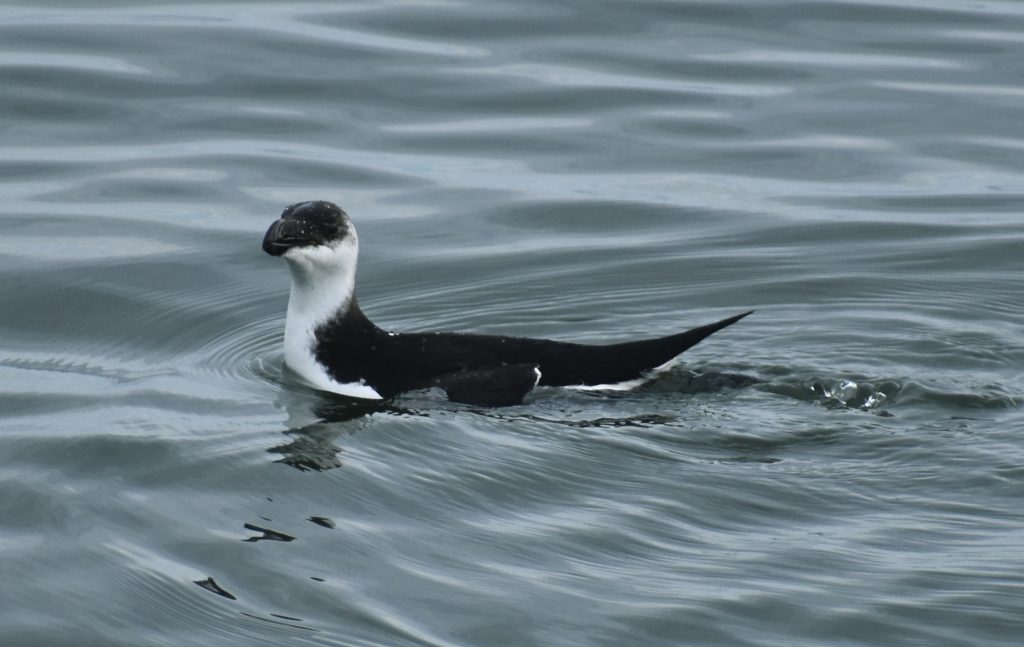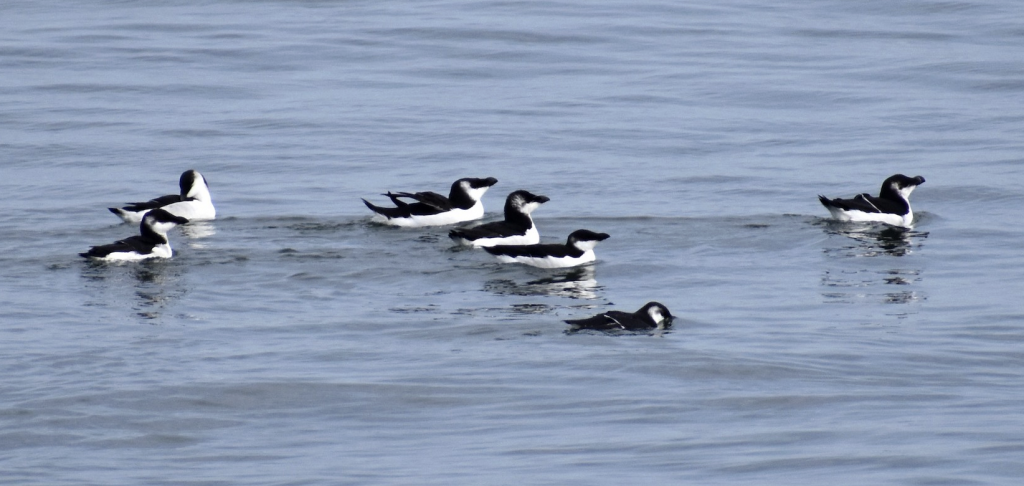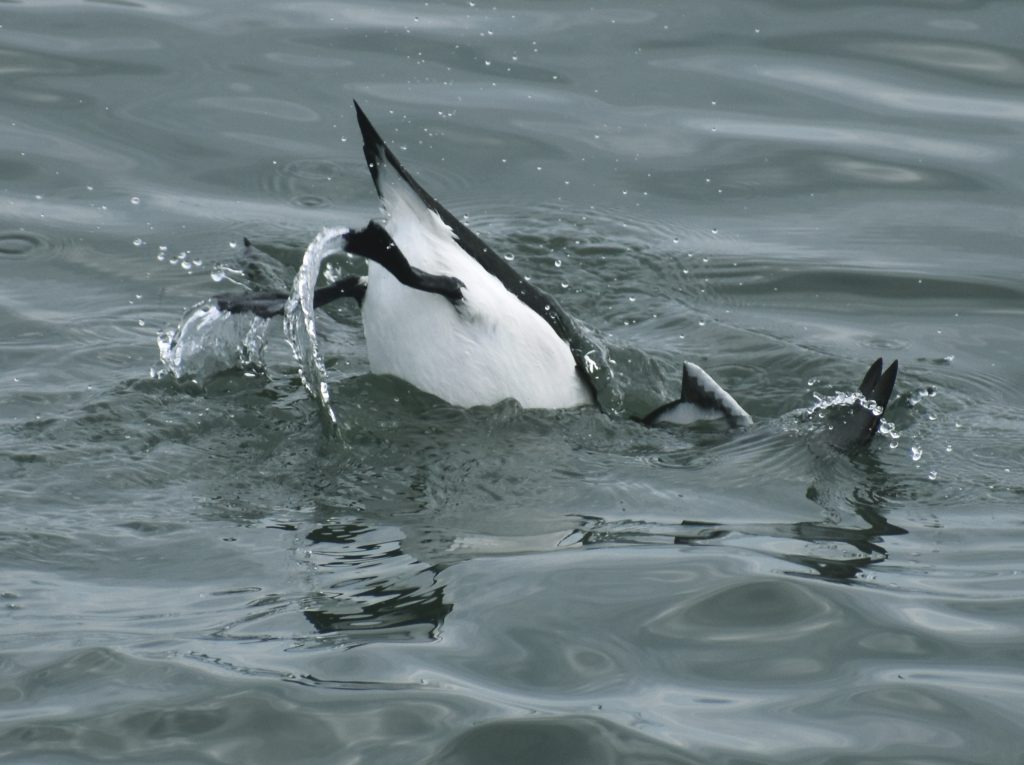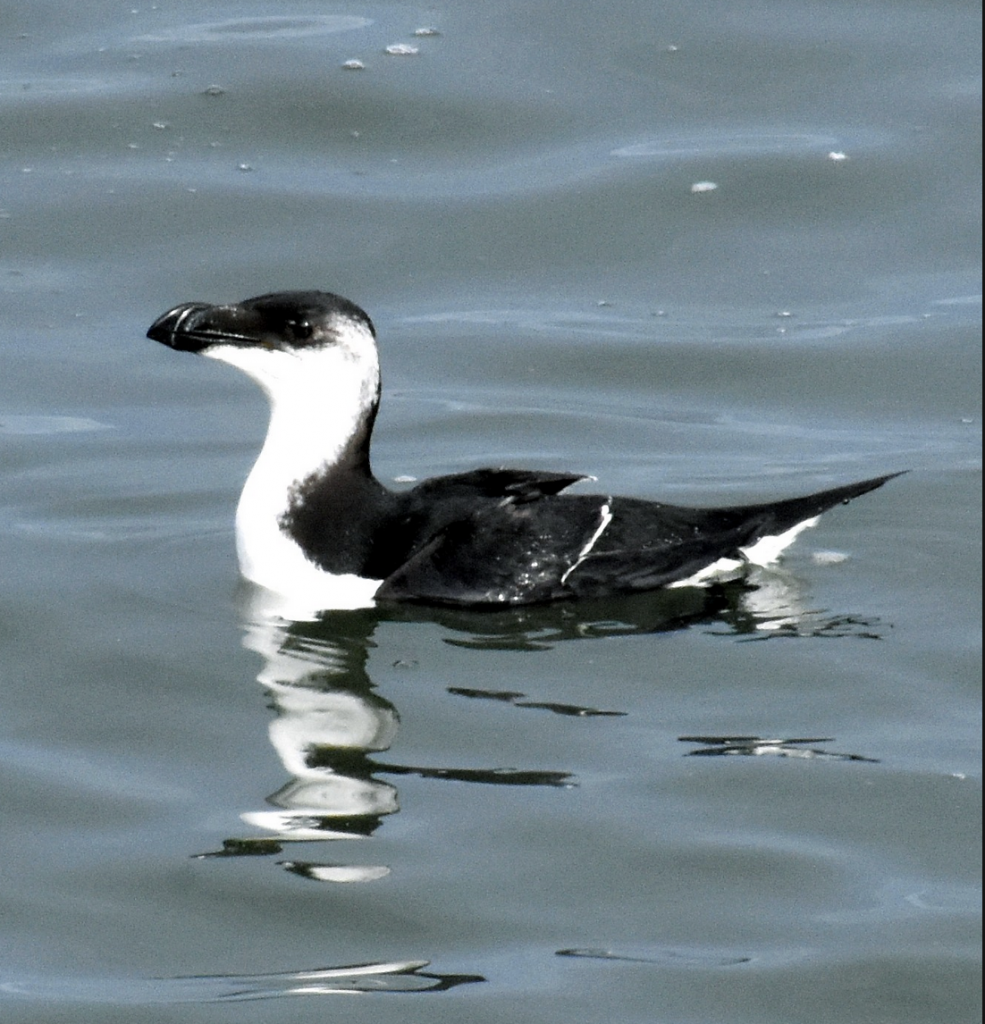This morning Jeanine and I decided to do a jetty sit in Atlantic City, hoping to spot a few alcids on a warm January day. The conditions were beyond ideal, with temperatures reaching a high of 60 degrees, with the lightest of breezes and calm waters that easily allowed us to spot any birds floating on the surface. As soon as we reached the Absecon Inlet wall and started walking the half-mile or so to the tip of the inlet, we spotted a Razorbill halfway across the inlet. Nice. And perhaps a good omen.

Soon afterward we had a nice comparative view of adult and immature Bonaparte’s Gulls patrolling the shoreline. I don’t remember often seeing immature Bonies, so that was a nice treat.
As we approached the jetty at the tip of the inlet, things started getting more interesting, with additional Razorbill sightings. Great. Then we spotted another. Razorbills have a tendency to take long dives and re-surface a surprising distance away. So was that the same bird? Nope. Now we had two at the surface at the same time. NICE! So now we spotted at least four separate Razorbills before even reaching the jetty at the entry of the inlet. When we did finally reach the tip of the jetty, things got ridiculous, with Razorbills seemingly all around us. We were excited to see a pod of four Razors together at the same time. Then there were five! Later on there were seven. Eventually, we had a group of eleven (!!!) Razorbills grouped together at the surface at the same time. Yikes!!


In addition to seeing abnormally high numbers of Razorbills (for us), the proximity of the sightings was nothing short of spectacular. These were not distant birds requiring a scope to see a far-off black-and-white barely-discernible dot on the water’s surface. They were close. I mean CLOSE. We’re talking naked-eye birding….not even bins required, with the birds often feeding right at the base of the jetty. I had left my camera in the car (of course), but Jeanine missed some photos because she couldn’t get the birds in full view with a 300 mm lens unless she zoomed out. We were able to see that the Razors were chasing small fish that were schooling near the rocks. And to top it off, they were occasionally vocalizing, with a sound that was somewhere between a croak and a burp. We never saw them surface with anything in their bill, but later read that they swallow their prey below the surface. We became familiar with their diving technique, in which they almost start ‘flying’ underwater, with their wings in a ‘flight’ position, unlike the loons.

What a great day. For us, Razorbills tend to be one of those species where if you see one or two birds, you count it as a highlight. Today we couldn’t scan for more than a minute without seeing one. Or four. Or eleven. What a treat. We were searching for other alcids, primarily Dovekies and Thick-billed Murres, but came up empty on those species. Maybe on our next trip.

